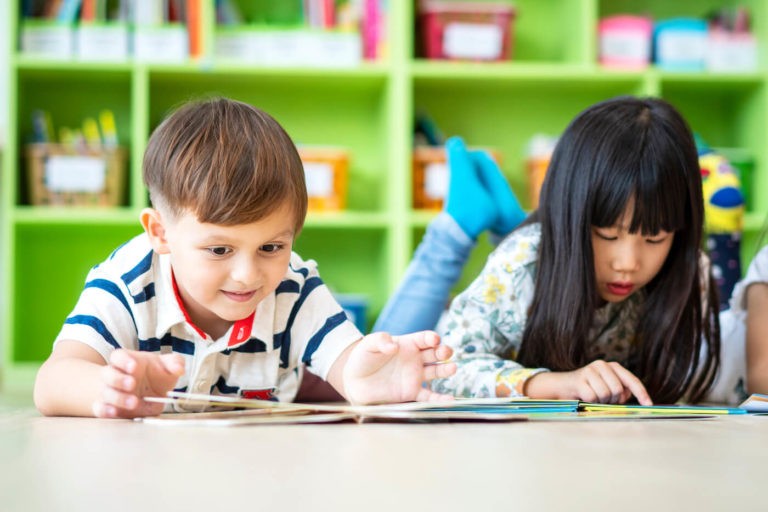Access to a variety of high-quality literature is essential for students’ growth as readers. Though students may have access to a school or public library, a classroom library allows teachers to curate the texts that most closely meet their instructional needs.
Determine Where to Source Your Books
I still get excited when the book fair fliers arrive, just like I did in elementary school. Only as an educator, the excitement is more about the possibility of free books for classrooms. Most book fair companies offer teacher discounts or even free books based on the number of sales. Book fairs offer the additional advantage of getting students excited about reading and building their personal libraries. Decorate the book fair site according to a theme and create hype around the event with posters and giveaways. Book fairs usually carry the latest editions of books, and as we know, most students judge a book by its cover. An appealing cover is the first step to drawing in young readers.
Another option is to ask for donations from students and elsewhere in the community. Many families are happy to get rid of books their own students have already read or outgrown. A book drive could be organized as a contest between classrooms or school buildings to see who can collect the most books. Books could be donated as “legacy books” to honor someone of the donor’s choosing.
Another option is the local library. Libraries may be willing to donate duplicates or older editions of books. Some libraries even offer schools the option of checking out books for delivery to the school. This option effectively expands a classroom library exponentially without the cost. Of course, it doesn’t offer the irreplaceable advantage of students browsing and picking out a book off a physical shelf.
The last option is thrift shops and yard sales. You may stumble across some complete collections of series in mint condition, or you could find nothing but outdated books with ripped covers. The search is fun, though!
Sort Books into Approachable Categories
There are a variety of ways to organize a classroom library, with the most important consideration given to sparking student interest. Sorting by genre is a good option if you don’t mind books of different reading levels in the same section. Another option is organizing by topic, which allows students to easily find books relating to their newest interest. Organizing books by reading level allows students to find books written at their own instructional level with ease. If you prefer to live dangerously, allow students to create organizational categories for their classroom library.
Create a Balance of Fiction and Nonfiction
Though the appropriate balance of fiction and nonfiction is debatable, I recommend a classroom library be approximately equally balanced between fiction and nonfiction. If organizing your library by topic, it might be useful to pair a fiction text with a nonfiction text on the same topic. For instance, the novel Charlotte’s Web, by E.B. White, could be paired with a National Geographic Kids article about spiders. This method would encourage students to read both fiction and nonfiction and create connections between the texts they read.
Create a Checkout System and Stick to It
There is no single correct way to organize a checkout system, but it is important to have one that is consistently used every time a student checks out a book. An old-school checkout log that students initial every time they check a book in or out is a great option for some. There are also a variety of apps out there that allows students to check out books using an online system, much like a public library. These systems usually require the teacher to catalog their library first. The key is consistency in whatever method you choose. Otherwise, all the time and money devoted to sourcing and organizing a stellar classroom library will be wasted in lost books.
Keep Books Clearly Labeled
Books should be labeled in a way that makes sense for both you and your students. In lower elementary grades, this might mean labeling the inside cover or spine of books with an icon, as well as text, that matches the correct bin. In older grades, simple text might be enough. Some digital checkout systems require a QR code to be attached to each book for checkout purposes. Your classroom should be identified somewhere on the book so that it can at least make it back to the correct classroom when lost.
Create an Inviting, Warm Space
A classroom reading environment should be inviting without being distracting. A few comfortable cushions and a rug are enough to make a cozy space for students to read. Consider a theme to give the space a sense of separation from the rest of the room. Don’t go overboard on decorations. The area should be soothing and calm, without clashing colors or decor. Be sure that any lamps or other decorations purchased meet local fire and health codes.
Remember, classroom libraries are not built overnight, but are collected over time. Slow and steady wins the race. Collect quality texts that will meet your and your students’ needs, not just books to fill the shelf. Enjoy the process!




